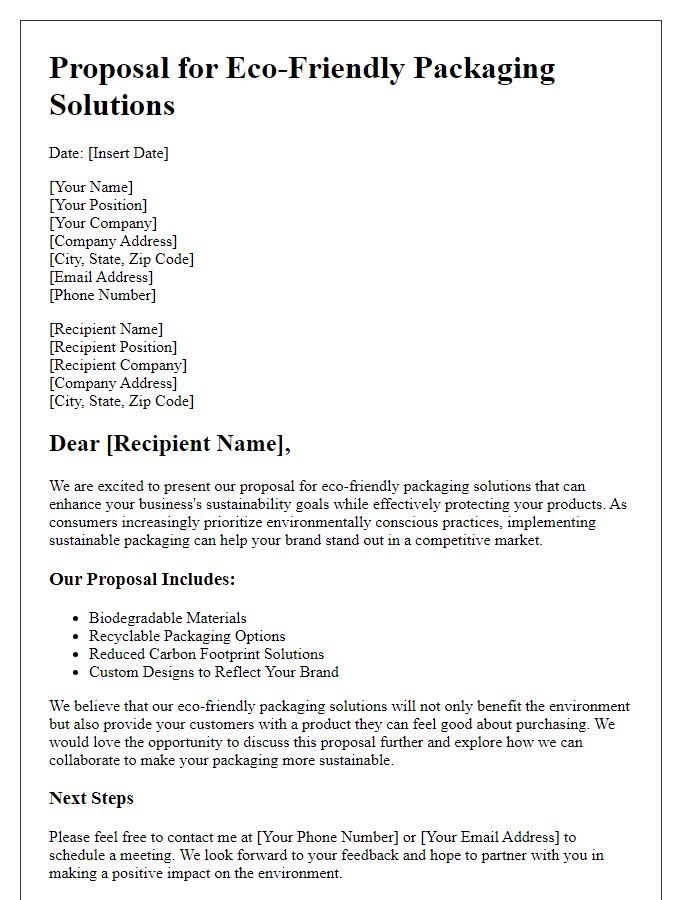Are you looking for an effective way to enhance your packaging solutions? In today's competitive market, selecting the right packaging can make all the difference in how your product is perceived and delivered. From sustainability to innovative designs, there are countless options to explore that can elevate your brand's presence. Curious to find out more about how our packaging solutions can benefit your business?

Client's packaging needs and challenges
Client's packaging requirements often entail optimizing protection for products during transport, reducing environmental impact, and enhancing aesthetic appeal. For instance, fragile items such as glassware necessitate robust cushioning materials, while electronic devices require anti-static packaging to prevent damage from static electricity. Sustainability challenges demand the use of biodegradable or recyclable materials in compliance with regulations, particularly in regions like the European Union where strict guidelines exist. Additionally, efficient stacking and space-saving designs can significantly reduce shipping costs, emphasizing the importance of customized solutions tailored to specific products. By addressing these multifaceted challenges, the proposed packaging solutions can improve supply chain efficiency and elevate brand perception.
Proposed packaging solution features
Proposed packaging solutions feature advanced materials such as biodegradable plastics and recycled paper, promoting sustainability and reducing environmental impact. Custom dimensions enhance fit and reduce material waste, with precision engineering ensuring optimal protection for products during transit. Innovative closure mechanisms, such as tamper-evident seals and easy-open designs, improve user experience and security. Visual branding opportunities incorporate vibrant color printing, enhancing market presence on retail shelves. Enhanced durability through water-resistant coatings and shock-absorbing inserts safeguards against damage, ensuring product integrity from the manufacturer to the consumer. Compliance with industry standards, such as ISO 14001 for environmental management, bolsters credibility in eco-conscious markets.
Cost-effectiveness and sustainability
A comprehensive packaging solution proposal focuses on cost-effectiveness and sustainability, integrating materials like recycled paper, biodegradable plastics, and reusable containers. The financial benefits include reduced material costs and lower disposal fees, potentially achieving savings of up to 30%. Sustainable practices enhance brand reputation, appealing to environmentally conscious consumers, and could lead to increased market share in sectors such as food, e-commerce, and retail. Implementation of these solutions can significantly reduce waste generation, promote circular economy principles, and contribute to measurable carbon footprint reductions, targeting a decrease of 20% over five years.
Company Branding and Identity
Company branding and identity play a critical role in the packaging solution for businesses, such as small enterprises and multinational corporations. Effective packaging reflects brand values, communicates product quality, and enhances consumer recognition through specific colors, fonts, and logos, which influences buyer behavior. For instance, eco-friendly packaging materials, like recycled paper or biodegradable plastics, resonate with sustainability-focused brands, appealing to environmentally conscious consumers. Packaging design elements, such as illustrations or typography, can evoke emotions that align with the brand's story, increasing customer loyalty. The integration of cohesive branding across all packaging platforms (boxes, labels, and bags) can create a distinctive market presence, driving engagement and sales.
Environmental Impact and Sustainability
Innovative packaging solutions can significantly reduce environmental impact while promoting sustainability in various industries. Eco-friendly materials such as biodegradable plastics and recycled paper can lessen landfill contributions, with statistics indicating that only 9% of plastics are recycled globally. Companies like TerraCycle have pioneered closed-loop systems, ensuring that materials are continuously reused. Implementing packaging designs that minimize waste, such as using minimalistic approaches or incorporating compostable elements, can enhance brand image and comply with emerging regulations, such as the European Union's Single-Use Plastics Directive established in 2019. Additionally, sustainable packaging can improve consumer perception, with surveys showing that 72% of consumers prefer brands committed to sustainability. Moreover, optimizing supply chains with reusable packaging reduces carbon emissions during transportation, contributing to corporate social responsibility goals and supporting initiatives like the 2030 Agenda for Sustainable Development.
Cost and Budget Considerations
Developing a comprehensive packaging solution proposal requires meticulous attention to cost and budget considerations, particularly focusing on specific materials, production processes, and projected quantities. For example, utilizing biodegradable materials, like PLA (Polylactic Acid), can enhance sustainability, yet it may increase production costs by 15% compared to traditional plastic options. Detailed budgeting should include not only material expenses but also labor costs associated with packaging assembly and logistics for distribution channels such as online retail platforms and brick-and-mortar stores. Additionally, calculating the overall cost-effectiveness of packaging must encompass potential savings from reduced waste management and recycling initiatives. Accurate forecasts of demand, based on historical sales data from previous quarters, can help avoid overproduction and minimize excess inventory costs. Engaging in discussions with manufacturers located in regions like Southeast Asia could yield cost advantages due to lower labor rates.
Target Audience and Market Needs
The modern packaging industry has shifted towards sustainable solutions to meet the evolving market demands, particularly among environmentally-conscious consumers. With the rise of eco-friendly packaging materials, such as biodegradable plastics and recycled paper products, companies are increasingly focusing on sustainable practices to enhance their brand reputation. The global packaging market, projected to reach approximately $1 trillion by 2025, reveals a strong consumer preference for products with minimal environmental impact, evidenced by a survey indicating that 74% of millennials prioritize sustainable packaging options. Furthermore, legislative efforts like the European Union's Single-Use Plastics Directive aim to reduce plastic waste, pushing businesses to adopt innovative packaging designs that comply with regulations. As such, businesses not only target eco-aware demographics but also strive to protect their market share in an industry rapidly evolving towards sustainability.
Design and Functionality
Innovative packaging solutions are essential for enhancing product visibility and ensuring safe transportation. A well-designed package, such as eco-friendly materials (biodegradable plastics or recycled cardboard), can significantly reduce environmental impact and appeal to sustainability-conscious consumers. Custom structural designs, including protective inserts, can minimize product damage during shipping (with statistics indicating up to 30% reduction in breakage rates). Additionally, incorporating user-friendly features, like easy-open mechanisms and resealable closures, increases consumer satisfaction and promotes repeat purchases. In competitive retail environments, effective branding through striking visuals and informative labeling attracts attention, turning shoppers into buyers.













Comments